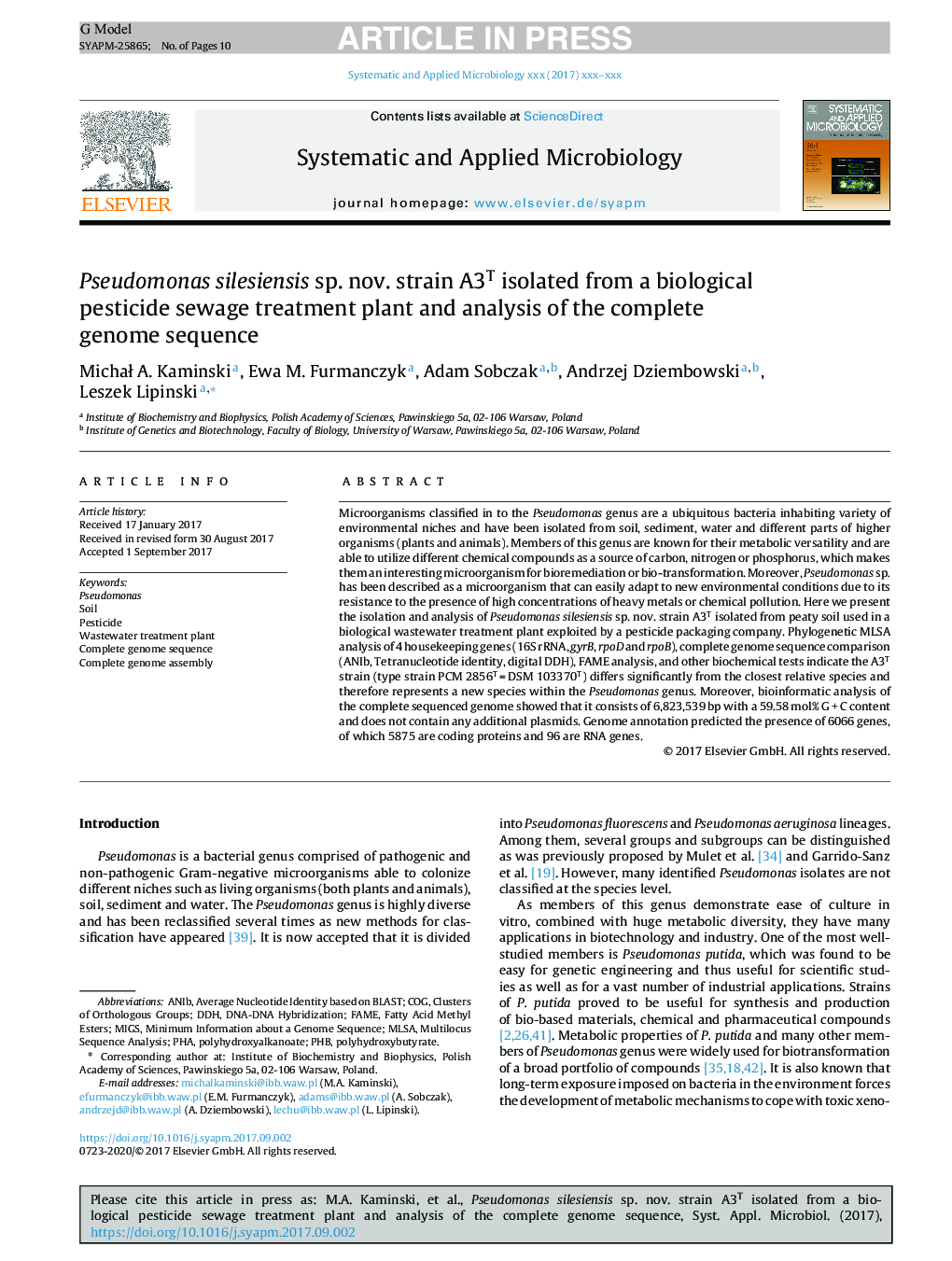| Article ID | Journal | Published Year | Pages | File Type |
|---|---|---|---|---|
| 8393506 | Systematic and Applied Microbiology | 2018 | 10 Pages |
Abstract
Microorganisms classified in to the Pseudomonas genus are a ubiquitous bacteria inhabiting variety of environmental niches and have been isolated from soil, sediment, water and different parts of higher organisms (plants and animals). Members of this genus are known for their metabolic versatility and are able to utilize different chemical compounds as a source of carbon, nitrogen or phosphorus, which makes them an interesting microorganism for bioremediation or bio-transformation. Moreover, Pseudomonas sp. has been described as a microorganism that can easily adapt to new environmental conditions due to its resistance to the presence of high concentrations of heavy metals or chemical pollution. Here we present the isolation and analysis of Pseudomonas silesiensis sp. nov. strain A3T isolated from peaty soil used in a biological wastewater treatment plant exploited by a pesticide packaging company. Phylogenetic MLSA analysis of 4 housekeeping genes (16S rRNA, gyrB, rpoD and rpoB), complete genome sequence comparison (ANIb, Tetranucleotide identity, digital DDH), FAME analysis, and other biochemical tests indicate the A3T strain (type strain PCM 2856TÂ =Â DSM 103370T) differs significantly from the closest relative species and therefore represents a new species within the Pseudomonas genus. Moreover, bioinformatic analysis of the complete sequenced genome showed that it consists of 6,823,539Â bp with a 59.58Â mol% GÂ +Â C content and does not contain any additional plasmids. Genome annotation predicted the presence of 6066 genes, of which 5875 are coding proteins and 96 are RNA genes.
Keywords
Related Topics
Life Sciences
Agricultural and Biological Sciences
Ecology, Evolution, Behavior and Systematics
Authors
MichaÅ A. Kaminski, Ewa M. Furmanczyk, Adam Sobczak, Andrzej Dziembowski, Leszek Lipinski,
